LOS INCAS (Segunda parte)
LOS INCAS (SEGUNDA PARTE)
Los formatos constructivos de piedra en sus
distintos estilos, las terrazas agrícolas en las laderas de las montañas, hacen
foco en el centro del Tahuantinsuyo, cuya capital fue Cuzco.
Virtualmente 25.000 kilómetros de carretera
pavimentada con sus respectivos desagües, puentes de piedras y tejidos (tipo
colgantes) unía el paso sobre ríos, cuencas y distintas depresiones geográficas.
Si bien los Incas fueron herederos,
supieron marcar su impronta colocando en su Imperio su propio sello.
Los señores de “huari” eran en algunos
aspectos los antepasados culturales más cercanos a los Incas, ambos eran
habitantes de tierras altas, ambos conquistadores, dando órdenes, organizando y
aceptando tributos.
Por encima de todos, los “Huaris” fueros
consumados constructores, auténticos planificadores urbanos de Sudamérica.
La ciudad de Pikillacta, a solo 27 km al
sur del Cuzco, es un gran ejemplo. Plano rectangular con 700 edificios de tres
pisos y 50 metros de largo; ancho de paredes de casi 2 mtrs. El material era
piedra sin desbastar, encajada en cemento de barro, y revestida con capas de
arcilla yeso.
En el Cuzco, en Sacsayhuaman y en Machu
Pichu, se construyeron grandes muros de piedra ciclópea, de rara perfección, en
aparejo; de hasta 20 toneladas de peso y colocadas a hueso, es decir sin mezcla,
“mortero”, con una perfección tal que no entra entre ellas una lámina de papel,
ni siquiera el aire de un suspiro.
En el transcurso del tiempo usaron en
general cuatro modos constructivos: “muros de piedra sostenida por encaje”,
“muros de piedra unida con argamasa a veces a modo de ladrillo”, “Muros sin
argamasa y por encaje prolijamente sostenido”, y el más avanzado modo
constructivo fue el “Inca Clásico Imperia”, cuyas cualidades hemos descripto.
Este último modo, específicamente impecable
y gigantesco, preveía un modo antisísmico (pensemos que estaban sobre Los
Andes); hacían muros en talud o redondeados a modo cóncavo en la parte superior
para alivianar peso y seguir superponiendo piedras.
Lo más sorprendente es cómo pudieron cortar
los Incas esas piedras, - “Una sola no cabe en un carro”, dijo el secretario de
Pizarro. Tienen el peso de entre 86 y 126 toneladas.
Pero no deja de ser menos intrigante el
diseño de cada ciudad, que deriva de las características generales de animales.
Es así que el Cuzco, toma la forma de “puma
macho”, simbolizando la fuerza y el poder de la ciudad más significativa del
imperio.
Pisaq: Los andenes de la agricultura
enmarcan la figura de un cóndor.
Ollaitaitmbo: muestra un mítico árbol de los orígenes – “árbol sagrado”.
Cataquillay - Ollaitaitambo: Gigantesco espacio ritual con la forma de una llama sentada acariciando a su cría.
Guaina Pichu: monte mayor a espadas de Machu Pichu que muestra un puma custodio, con la espalda encorvada a modo de de ataque y defensa (no es una ciudad, presenta terrazas de cultivo).
Machu Pichu: Ciudadela con diseño del
“lagarto”, representa el poder del campo , la naturaleza custodiada por el puma
del Monte Viejo o Mayor.
Machu Pichu visto desde el cerro Guaina
Pichu, se ve con la forma de un cóndor.
Plano de Machu Puchu
THE INCAS
The stone construction formats in their different styles, the agricultural terraces on the slopes of the mountains, focus on the center of Tahuantinsuyo, whose capital was Cuzco.
Virtually 25,000 kilometers of paved highway with their respective drains, stone and fabric bridges (hanging type) linked the passage over rivers, basins and different geographical depressions.
Although the Incas were heirs, they knew how to mark their mark by placing their own seal on their Empire.
The lords of "huari" were in some respects the closest cultural ancestors to the Incas, both were highland dwellers, both conquerors, giving orders, organizing and accepting tribute.
Above all, the "Huaris" were consummate builders, authentic urban planners of South America.
The city of Pikillacta, just 27 km south of Cuzco, is a great example. Rectangular plan with 700 three-story buildings 50 meters long; width of walls of almost 2 mtrs. The material was rough stone, embedded in mud cement, and covered with layers of plaster clay.
In Cuzco, in Sacsayhuaman and in Machu Pichu, great walls of colossal stone were built, of rare perfection, in rigging; of up to 20 tons of weight and placed on the bone, that is to say without mixing, “mortar”, with such perfection that not a sheet of paper enters between them, not even the air of a sigh.
In the course of time, they generally used four construction methods: “stone walls supported by sockets”, “stone walls joined with mortar sometimes like brick”, “Walls without mortar and by neatly supported sockets”, and the most advanced constructive mode was the "Classic Inca Imperia", whose qualities we have described.
This last mode, specifically impeccable and gigantic, provided for an anti-seismic mode (let's think they were over the Andes); They made walls on a slope or rounded in a concave way in the upper part to lighten weight and continue superimposing stones.
The most surprising thing is how the Incas were able to cut those stones, - "A single one does not fit in a car", said Pizarro's secretary. They have the weight between 86 and 126 tons.
But the design of each city, which derives from the general characteristics of animals, is no less intriguing.
Thus, Cuzco takes the form of a "male puma", symbolizing the strength and power of the most significant city of the empire.
Pisaq: The agricultural platforms frame the figure of a condor.
Ollaitaitmbo: shows a mythical tree of origins – “sacred tree”.
Cataquillay - Ollaitaitambo: Gigantic ritual space in the shape of a seated llama caressing its young.
Guaina Pichu: larger mountain to swords of Machu Pichu that shows a custodian puma, with its back bent as an attack and defense (it is not a city, it has cultivation terraces).
Machu Pichu: Citadel with a “lizard” design, it represents the power of the countryside, nature guarded by the puma of Monte Viejo or Mayor.
Machu Pichu seen from the Guaina Pichu hill, is seen in the shape of a condor.
Lic. Teresa Lorenzoni




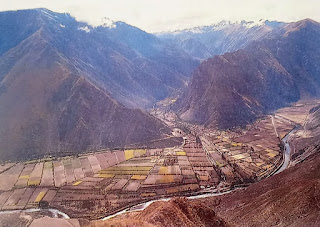


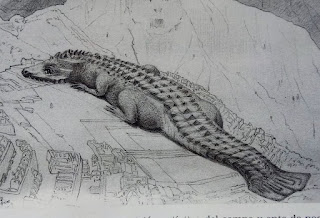


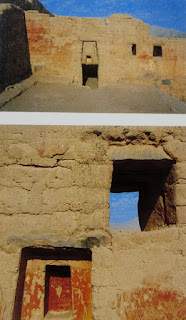
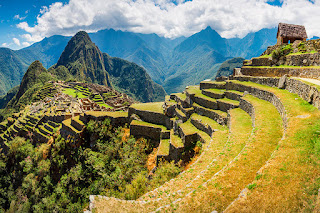
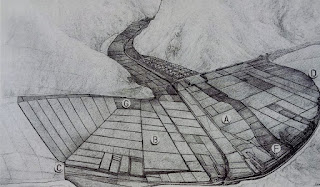





Comentarios
Publicar un comentario